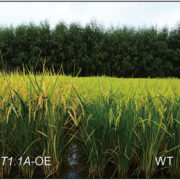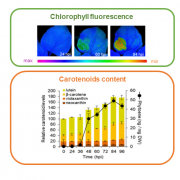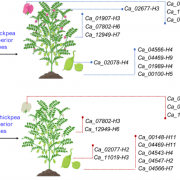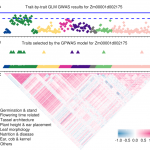Review: The genetic basis and nutritional benefits of pigmented rice (Frontiers Genetics)
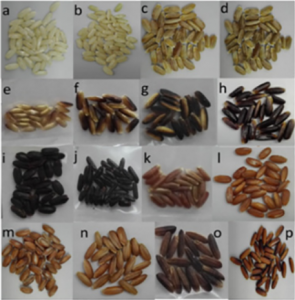 Pigmented rice varieties are those in which a pigment is deposited in the bran, the outer layer of the grain. The pigment can be from brown to red (proanthocyanidins) or from purple to black (anthocyanins). In the course of domestication, humans have selected against the genetic factors responsible for pigmentation due to their linkage with traits controlling grain shattering and seed dormancy. However, indigenous knowledge of some rice-consuming populations suggests that pigmented rice possesses a plethora of health-befitting properties such as anti-inflammatory, anti-diabetic, anti-hyperlipidemic, anti-arthritic, anti-cancerous and diuretic activities; modern scientific evidence sometimes also supports the traditional knowledge. Mbanjo et al. review the nutritional and health benefits of pigmented rice. They discuss the phytochemicals behind the benefits, the genetic factors and mechanisms behind production of the phytochemicals, and how these factors and mechanisms are identified. They conclude with a discussion of efforts to develop pigmented rice varieties to meet the rising demand for their consumption. (Summary by Hari Gowthem G) Frontiers in Genetics 10.3389/fgene.2020.00229
Pigmented rice varieties are those in which a pigment is deposited in the bran, the outer layer of the grain. The pigment can be from brown to red (proanthocyanidins) or from purple to black (anthocyanins). In the course of domestication, humans have selected against the genetic factors responsible for pigmentation due to their linkage with traits controlling grain shattering and seed dormancy. However, indigenous knowledge of some rice-consuming populations suggests that pigmented rice possesses a plethora of health-befitting properties such as anti-inflammatory, anti-diabetic, anti-hyperlipidemic, anti-arthritic, anti-cancerous and diuretic activities; modern scientific evidence sometimes also supports the traditional knowledge. Mbanjo et al. review the nutritional and health benefits of pigmented rice. They discuss the phytochemicals behind the benefits, the genetic factors and mechanisms behind production of the phytochemicals, and how these factors and mechanisms are identified. They conclude with a discussion of efforts to develop pigmented rice varieties to meet the rising demand for their consumption. (Summary by Hari Gowthem G) Frontiers in Genetics 10.3389/fgene.2020.00229
[altmetric doi=”10.3389/fgene.2020.00229″ details=”right” float=”right”]


